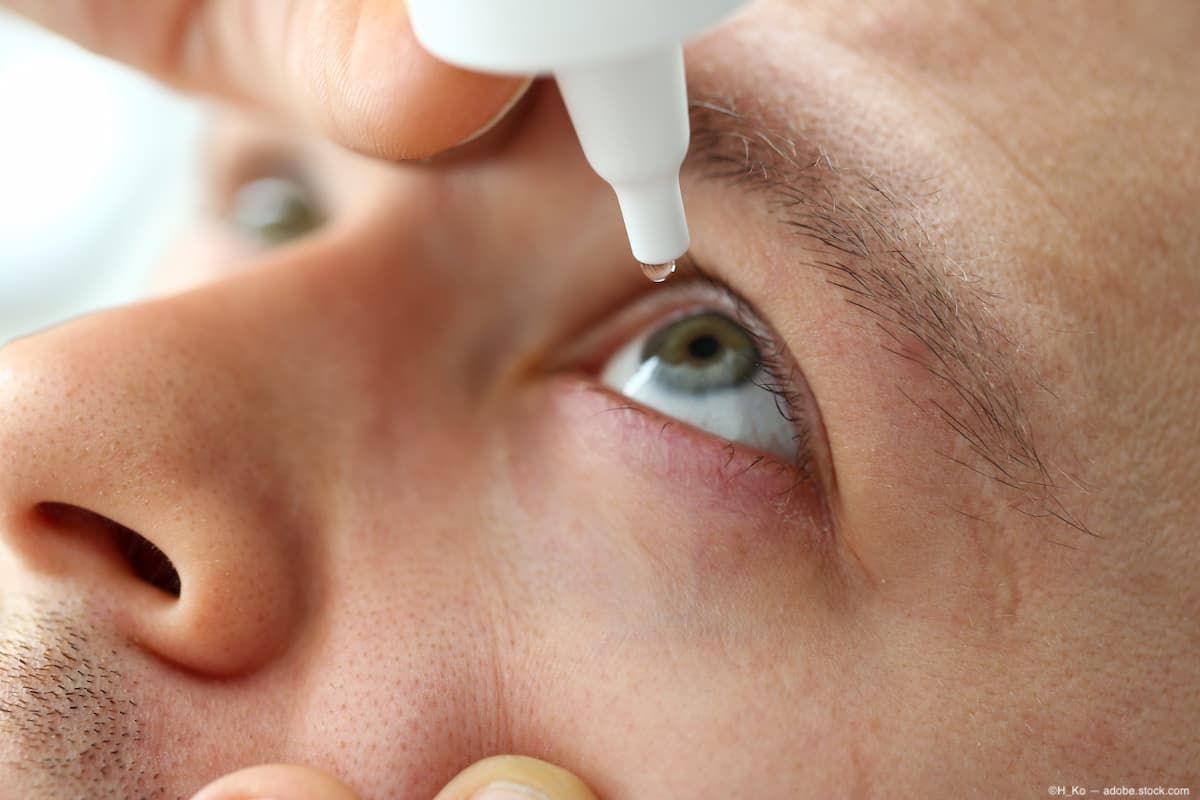OcuTerra announces phase 2 DR:EAM trial fails to meet primary and secondary key endpoints
The trial evaluated nesvategrast (OTT166 5%) eye drops in patients with diabetic retinopathy.
(Image credit: AdobeStock/H_Ko)

OcuTerra announced topline results from its phase 2 DR:EAM (Diabetic Retinopathy: Early Active Management) clinical trial of nesvategrast (OTT166). While it was shown to be safe and well tolerated, OTT166 did not meet its primary or key secondary efficacy endpoints.1
OTT166 is a novel, selective RGD integrin inhibitor with anti-VEGF and other growth factor modulating effects with the potential to modulate multiple drivers of DR developed as an eye drop to provide a non-invasive option for patients.2 The trial was a randomized, double-masked, vehicle-controlled study that enrolled ~210 patients diagnosed with moderately severe to severe non-proliferative diabetic retinopathy (NPDR) or mild proliferative diabetic retinopathy (PDR) and who were treatment naïve.3
In a press release from OcuTerra, Kerrie Brady, CEO and President of OcuTerra, discussed the results.
“We are disappointed that the topline data on nesvategrast from our Phase 2 DR:EAM clinical trial did not demonstrate a statistically significant impact on severity or progression of diabetic retinopathy,” said Brady. “We plan to review the full dataset from the DR:EAM study to evaluate the future of the nesvategrast program. I want to wholeheartedly thank the patients and investigators who participated in the DR:EAM trial as well as the OcuTerra team for making this study possible.”
Results showed that nesvategrast failed to demonstrate a statistically significant improvement on the diabetic retinopathy severity scale (DRSS) for patients treated with nesvategrast compared to the placebo group.1 The primary efficacy endpoint was the percentage of patients that have a ≥2-step improvement in the DRSS. Data also showed nesvategrast did not have significant impact on the progression of the disease as measured by DRSS, a key secondary endpoint.
However, analysis of the development of vision-threatening events (VTEs) stratified by level of disease severity at baseline, demonstrated a statistically significant improvement in patients with DRSS levels 47 and 53 (moderately severe, and severe non-proliferative diabetic retinopathy respectively) at baseline in preventing the onset of VTEs by week 24 (p=0.045).1
David Tanzer, MD, Chief Medical Officer of OcuTerra Therapeutics said in a release, “While our Phase 2 topline data did not show the efficacy we had hoped, we had advanced the program with substantial preclinical and clinical data and will use learnings to help inform the ophthalmic community and their future work.”
OcuTerra plans to further evaluate its strategic alternatives and will share additional details at a later, unspecified, date.1
References:
OcuTerra Announces Topline Data from Phase 2 DR:EAM Trial Evaluating Nesvategrast (OTT166 5%) for Patients with Diabetic Retinopathy. Press release; March 14, 2024. Accessed March 14, 2024. https://www.businesswire.com/news/home/20240314840296/en/OcuTerra-Announces-Topline-Data-from-Phase-2-DREAM-Trial-Evaluating-Nesvategrast-OTT166-5-for-Patients-with-Diabetic-Retinopathy
Ocuterra. OTT166 for physicians. Accessed March 14, 2024. https://www.ocuterratx.com/for-physicians
Clinicaltrials.gov. Nesvategrast (OTT166) in Diabetic Retinopathy (DR). NCT05409235. Accessed March 14, 2024.
Newsletter
Keep your retina practice on the forefront—subscribe for expert analysis and emerging trends in retinal disease management.